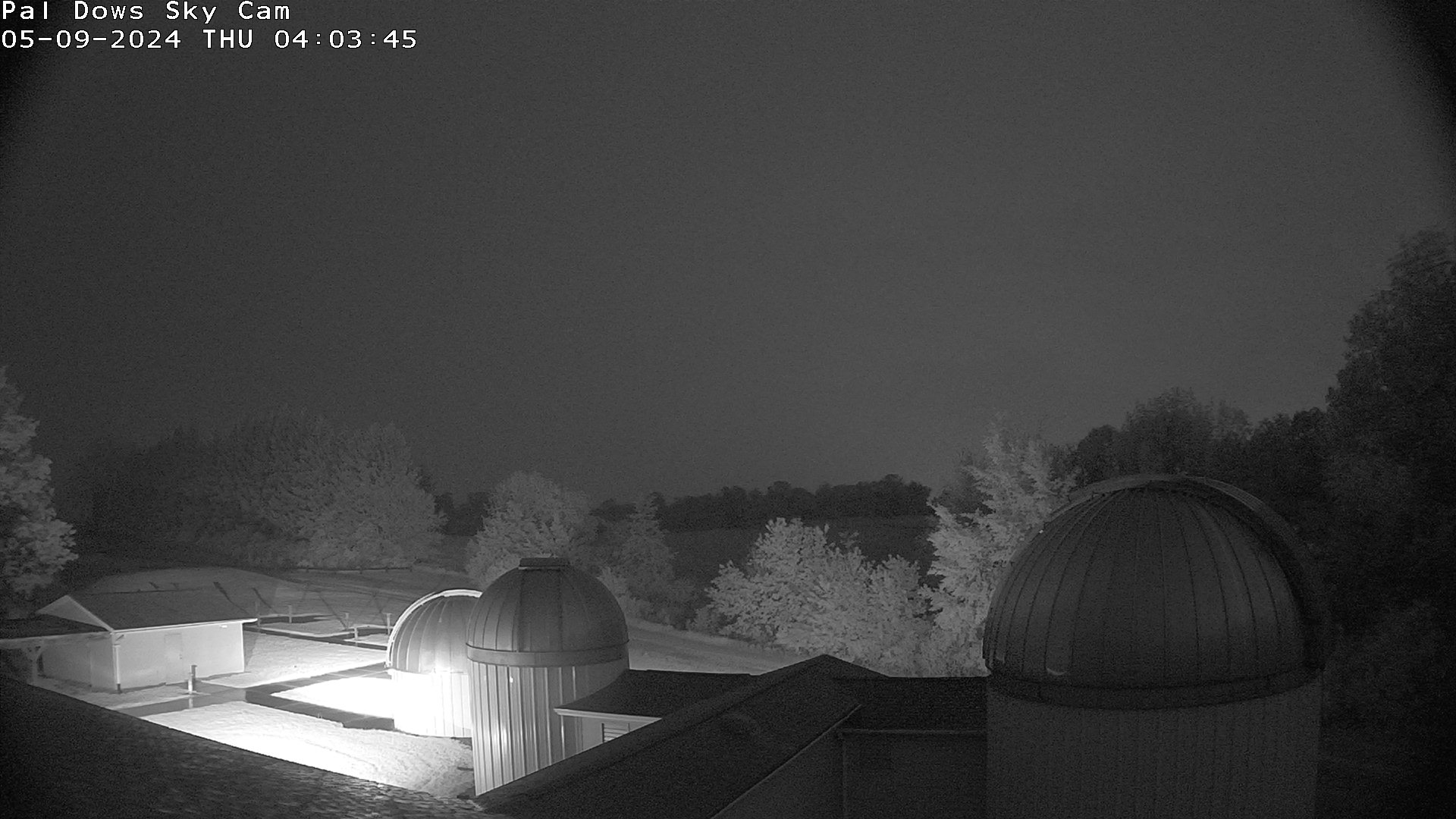A view from the roof of the EIOLC.
Right click on image and open in new tab to get a larger image.

All Sky Imager at the EIOLC
Right click on image and open in new tab to get a larger image.
SRI International research scientist Dr. Asti Bahtt with the SRI MANGO network camera on the roof of the EIOLC on November 15, 2015. The Mid-latitude All-sky-imaging Network for Geophysical Observations (MANGO) employs a combination of two powerful optical techniques used to observe the dynamics of Earth's upper atmosphere: wide-field imaging and high-resolution spectral interferometry. Both techniques observe the naturally occurring airglow emissions produced in the upper atmosphere at 630.0- and 557.7-nm wavelengths. Instruments are deployed to sites across the continental United States, providing the capability to make measurements spanning mid to sub-auroral latitudes. The current instrument suite in MANGO has six all-sky imagers (ASIs) observing the 630.0-nm emission (integrated between ∼200 and 400 km altitude) – the camera stack shown installed here is one of those. Plus six ASIs observing the 557.7-nm emission (integrated between ∼90 and 100 km altitude), and four Fabry-Perot interferometers measuring neutral winds and temperature at these wavelengths. The network makes unprecedented observations of the nighttime thermosphere-ionosphere dynamics with the expanded field-of-view provided by the distributed network of instruments.
The network, and the data obtained, is in the public domain because it is all a result of contracts with the National Science Foundation (NSF) and SRI International is a non-profit organization. You can find links to the data and near-realtime video clips from the following compilation of site data:
https://www.mangonetwork.org/mango/v1/
In particular, the following link allows you to select a video clip of the previous night’s data from the Eastern Iowa Observatory (EIO) All Sky Imager (ASI). Use the calendar to select a night and view the result obtained by combining a processed image every 4 minutes into a video.
https://www.mangonetwork.org/mango/v1/database/sites/eio/redline/
A scientific paper published in 2023 by Dr. Bahtt et al with relevant information about the network of imagers, the data obtained, and some of the findings obtained from the network over several years is available at the following link:
https://agupubs.onlinelibrary.wiley.com/doi/full/10.1029/2023JA031589
The Eastern Iowa All Sky meteor camera network
The CAA operates 3 AllSky7 cameras in Eastern Iowa. One of the cameras is located on the roof of the EIOLC, another in North Linn Count and one in LeGrand Iowa. Each camera contains 7 image sensors that cover the entire sky. The cameras operate 24/7 and record the sky in both HD and SD resolutions. Software in camera control computers analyzes the night time video and detects any meteors seen. Having multiple cameras allows the trajectory of a detected meteor to be calculated and possibly it's orbit in the solar system before it entered the earth's atmosphere. Other interesting phenomenon have been recoded by the cameras,such as sprites and aurora. Sprites are a large-scale electrical discharge that appears as a red glow above thunderclouds. You can see video of some of these things on the Cedar Amateur Astronomers YouTube channel.
https://www.youtube.com/watch?v=IKBKN7a1Wf0
You can see live views from the three cameras in the Eastern Iowa All Sky meteor camera network here:
https://allsky7.net/index.html?&country=US-IA#liveview
A live view from the CAA AllSky7 camera looking North East




